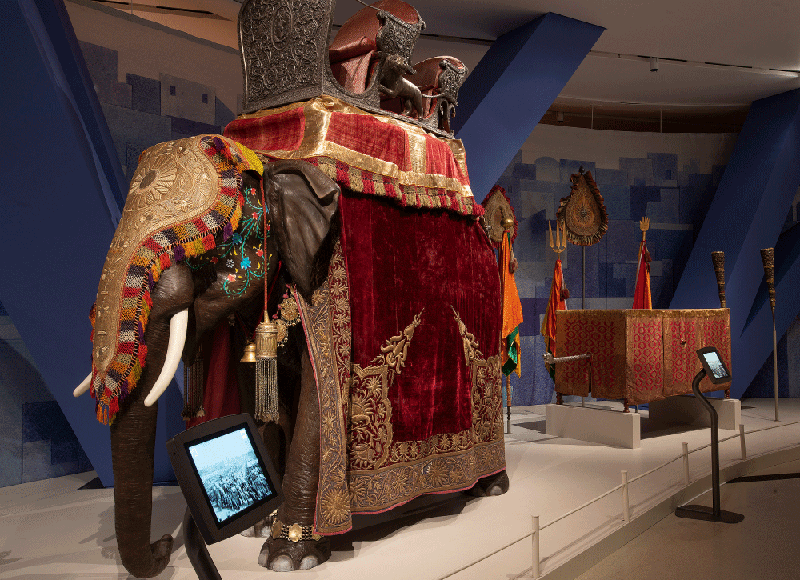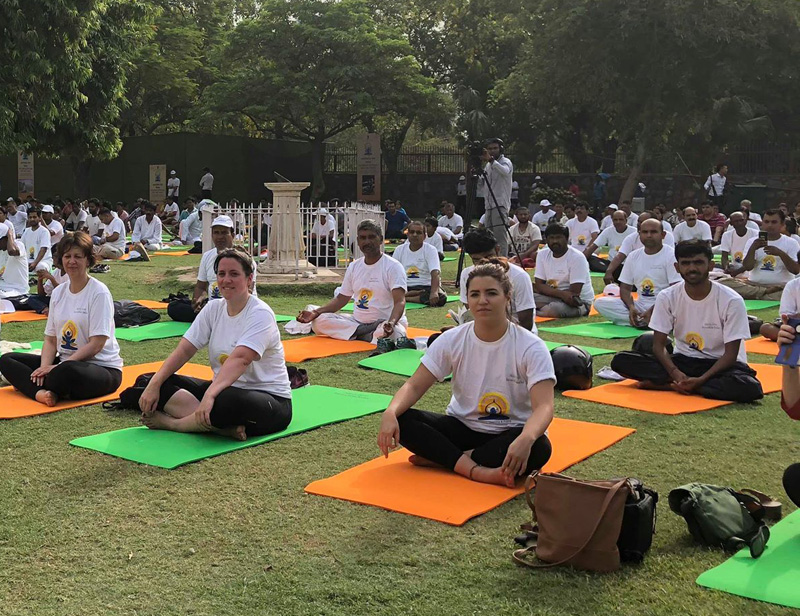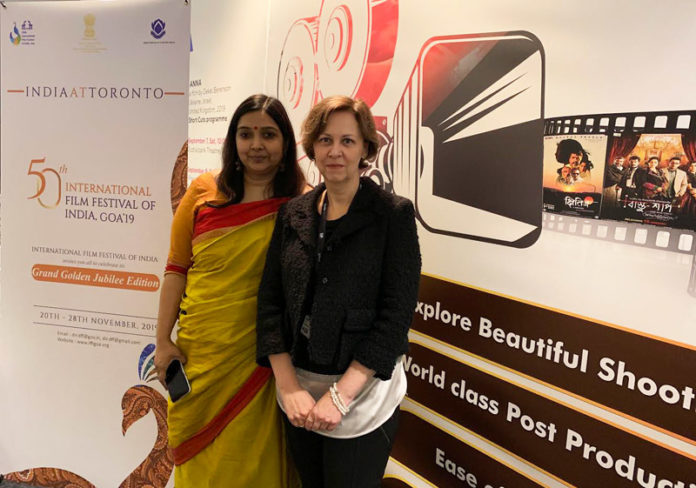I have begun my journey of learning that ancient Indian tradition called yoga


TORONTO: One of the highlights every summer for me is the Toronto International Film Festival (TIFF). It is exciting to seeing great films, the stars who are in town and, of course, crash a few parties. In addition, I usually also attend the TIFF industry sessions where I get to mingle with and learn from renowned and successful people in the business. It generally adds juice to my creative inspiration.
This year, one of my favourite films was Bombay Rose, written, designed and directed by Indian animator, Gitanjali Rao. Bombay Rose is an enchanting, animated feature film that follows several characters whose lives intersect, along the themes of longing, love and romance, in the city of Bombay (Mumbai). The images are all hand-painted, frame-by-frame (with some technical assistance to make the images move fluidly) — an incredibly difficult undertaking. But, it paid off.
Bombay Rose is Rao’s first feature film. It is filled with the sounds, colours and urban landscapes of the India’s largest city, blended with Bollywood melodrama; and truly stunning to watch. You do not even need to have experienced Bombay/Mumbai to enjoy it, although having briefly visited the city I could relate more deeply to the story.
Prior to the screening, I attended a talk with some of the film’s team members who spoke about the making of the movie (Rao was not in attendance). They talked about the challenges working with a European folly artist to re-create the sounds of Indian bangles “jingling” (the bracelets worn by the main character), in a way that was authentic; or the sound of a Bombay bicycle, which is apparently a specific sound to Bombay and one you will not find elsewhere. This has me thinking that, perhaps, we all take the sounds in our own city for granted.
Also at the festival, I attended the opening ceremonies of the India Pavilion in the industry centre, which included a ribbon-cutting ceremony by the India High Commissioner and the new Consul General, Apoorva Srivastava, who recently arrived in Toronto. The pavilion was set up to promote filming in India to those working in the industry.

JAIPUR AND MAHARAJAS
The rest of the summer I had Rajasthan on my mind.
The Indian state of the maharajas played a prominent theme in my life this summer. Alas, I did not physically return there, but indeed it has been on my mind.
In July, the United Nations made an exciting announcement at a meeting in Baku that Jaipur, the walled city teeming with culture, architecture, forts and palaces, has made the list of UNESCO World Heritage Sites. Prime Minister Modi responded to the news in a tweet: “Jaipur is a city associated with culture and valour. Elegant and energetic, Jaipur’s hospitality draws people from all over. Glad that this city that is so unique to the region has been inscribed as a World Heritage Site by @UNESCO.”
India now has 38 UNESCO World Heritage Sites. To be listed as a World Heritage Site is a boost for tourism because it means many more people will visit. One of the obvious benefits is that it is great for the economy, not only for the city of Jaipur, but also the state of Rajasthan.
This news put me in the mood to attend a fascinating exhibition at Toronto’s Royal Ontario Museum, Treasures of a Desert Kingdom: The Royal Arts of Jodhpur, India, showcasing jewels and art from a royal Rajasthan family. Meandering through the exhibition was the next best thing to actually being in the land of the maharaja. The collection, which has been touring North America, comprises 4 centuries worth of historic jewelry, masterful paintings and other art that depict royal life in the kingdom, including the role of women.
Although the exhibition has closed, the ROM’s website offers a three-part podcast, Reflections on Royal India, that delves into the history and art relative to the exhibition, and also touches more generally on South Asian art and culture. Created and hosted by journalist, Aparita Bhandari, the podcast explores the Rajput (patrilineal clans located primarily in central and northern India), the role of women and caste in medieval Indian courts. So, tune-in if you have a love for South Asian art and culture.
MY YOGA JOURNEY
Lastly, on a more personal note, I have begun my journey of learning that ancient Indian tradition: yoga. While I have been a fair weathered yoga student attending classes sporadically in Toronto, it was a recent trip to Pune when I visited renowned ashrams and yoga academies that sparked my interest in learning more.


I recently picked up the book, Light on Life, penned by the “Michelangelo of yoga,” B.K.S. Iyenger, which has been a perfect start to discovering yogic philosophy.
(Shannon Skinner is an award-winning creator/host of ExtraodinaryWomenTV.com, author, radio host, travel writer and international speaker. More information at ShannonSkinner.com. Tweet @Shannon_Skinner)
ALSO BY SHANNON SKINNER: How responsible tourism is changing lives globally








